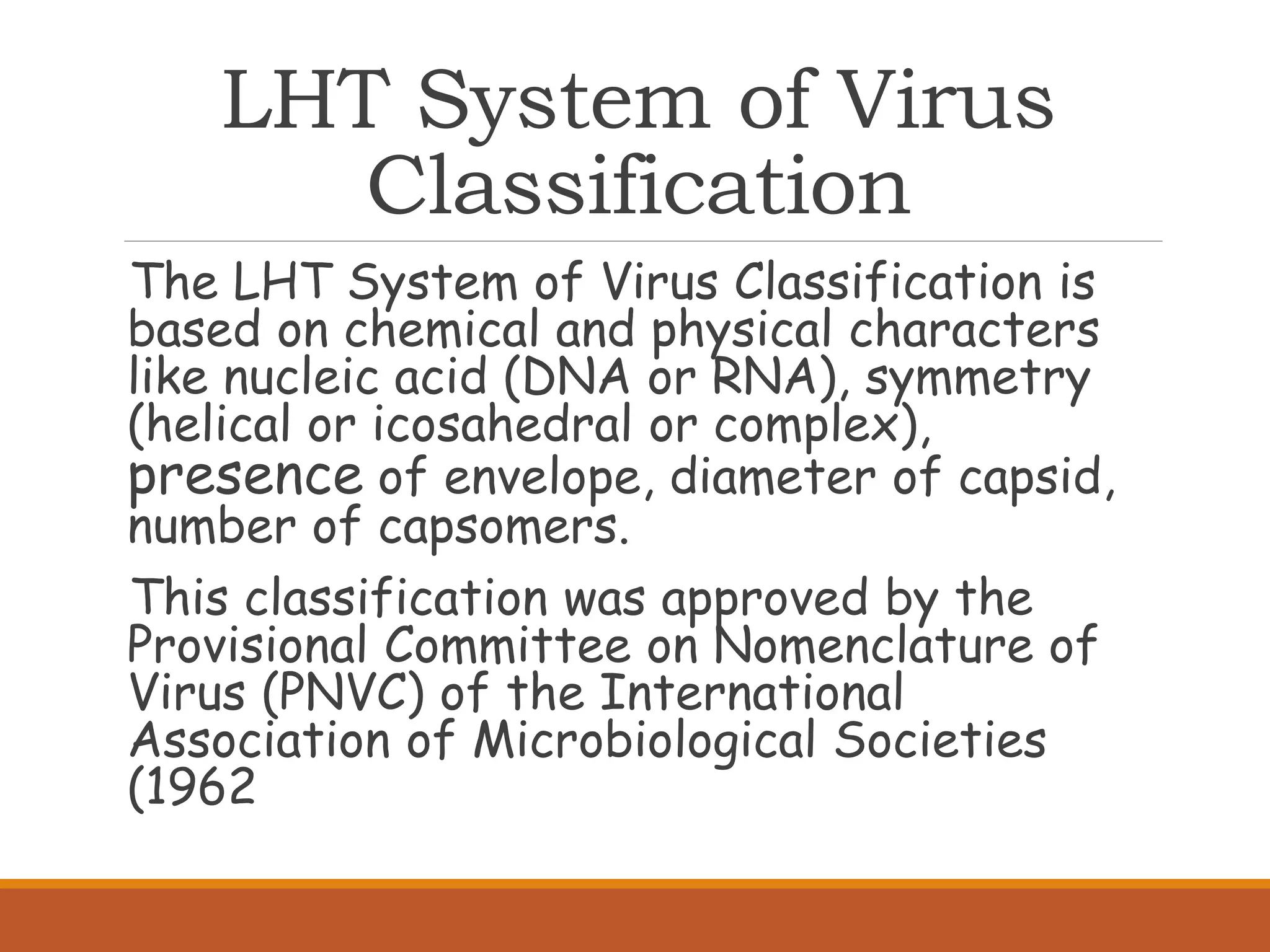The document discusses classification systems for viruses, bacteria, protists, and fungi. It describes the current three domain system which classifies organisms into Archaea, Bacteria, and Eukarya domains based on rRNA structure. Viruses are described as non-living particles that invade and multiply within host cells. They have a protein coat, genetic material, and surface proteins. Bacteria are classified according to characteristics like shape, staining, metabolism. Gram staining distinguishes between Gram positive and Gram negative bacteria based on cell wall thickness.









































































